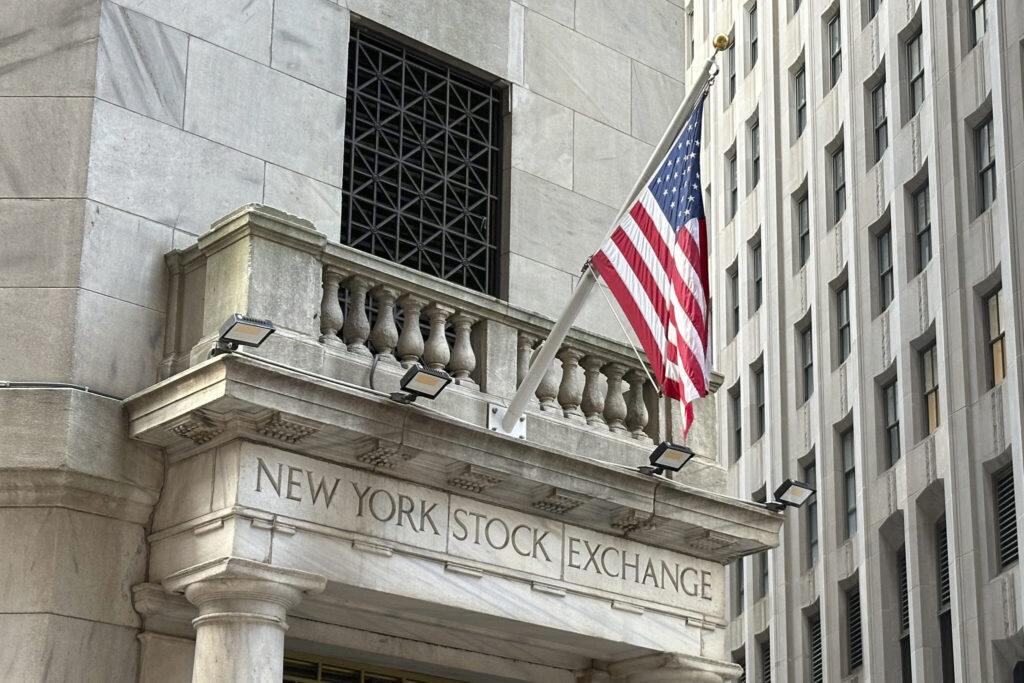U.S. stocks/ Hong Kong stock drop/ Wall Street steady/ S&P 500/ oil prices/ bond yields/ Treasury yields/ Federal Reserve rate cuts/ economic data/ PepsiCo stock/ DocuSign S&P MidCap/ Newslooks/ NEW YORK/ J. Mansour/ Morning Edition/ After a sharp fall in Hong Kong stocks, U.S. markets showed resilience, supported by a dip in oil prices. The S&P 500 climbed 0.6%, while oil and bond yields steadied, helping investors balance concerns around global tensions and economic reports.

U.S. Market Quick Looks:
- Stock Rebound: U.S. markets rose despite a global dip, with the S&P 500 up 0.6%.
- Oil Prices: Brent crude dropped 3.5%, calming market pressures from the Middle East.
- Treasury Yields: 10-year and 2-year yields held steady, easing bond market strain.
- Fed Rate Speculation: Strong U.S. economic data keeps Fed rate cuts in question.
Wall Street Firms as Oil Prices Ease, Hong Kong Plummets
Deep Look:
After a turbulent day in global markets spurred by Hong Kong’s largest stock drop since 2008, U.S. stocks found stability on Tuesday, bolstered by a dip in oil prices and steady bond yields. By mid-morning trading, the S&P 500 index increased by 0.6%, partially recovering from Monday’s losses. The Dow Jones Industrial Average rose by 30 points, or 0.1%, and the Nasdaq composite climbed 1%.
Despite Wall Street’s rebound, global stock markets encountered strong headwinds following extreme volatility in China. The Hang Seng index in Hong Kong dropped by 9.4%, marking its worst trading day since the 2008 financial crisis, as initial optimism about possible economic stimulus in China quickly diminished. Mainland China’s stock markets reopened following a holiday, seeing a significant uptick in the Shanghai index by 4.6%, though the boost didn’t prevent the larger global downturn.
A retreat in oil prices helped offset pressures on the U.S. market. Brent crude, a global oil benchmark, dropped 3.5% to $78.12 per barrel, and the U.S. benchmark fell similarly, easing concerns of oil flow disruptions due to tensions in the Middle East. Bond yields also contributed to the steadiness; the 10-year Treasury yield rose only slightly to 4.05%, while the 2-year yield held firm at 3.99%, offering some relief after recent surges to summer-high levels.
Higher Treasury yields generally make investors more cautious about stocks, as the safer, fixed-income investments become more appealing. A series of positive economic reports, including robust U.S. hiring data from the previous week, fueled hopes of avoiding a recession, but also lowered expectations for Federal Reserve interest rate cuts. Markets are now leaning toward a modest quarter-point cut in rates, with some investors betting the Fed may hold rates steady through November.
Within the U.S. market, PepsiCo shares rose 0.6% following stronger-than-expected profit results for the quarter, although revenue missed projections. CEO Ramon Laguarta adjusted PepsiCo’s annual revenue forecast, citing that U.S. consumers have pulled back on snacks and beverages after recent price hikes. Meanwhile, DocuSign’s stock surged by 8.3% after being added to the S&P MidCap 400 index, replacing MDU Resources, which recently spun off its construction services unit.
The day also saw declines among oil and gas companies, as the energy sector surrendered some of the gains it had achieved amid oil price spikes. Chevron was down 1.9%, contributing to the Dow’s relative lag.
Internationally, China’s economic planning agency outlined modest measures to support the economy, falling short of the robust spending some investors had anticipated, leading to declines in companies globally with heavy China exposure. Estee Lauder, for example, lost 4.4%, while Wynn Resorts fell by 4%.







